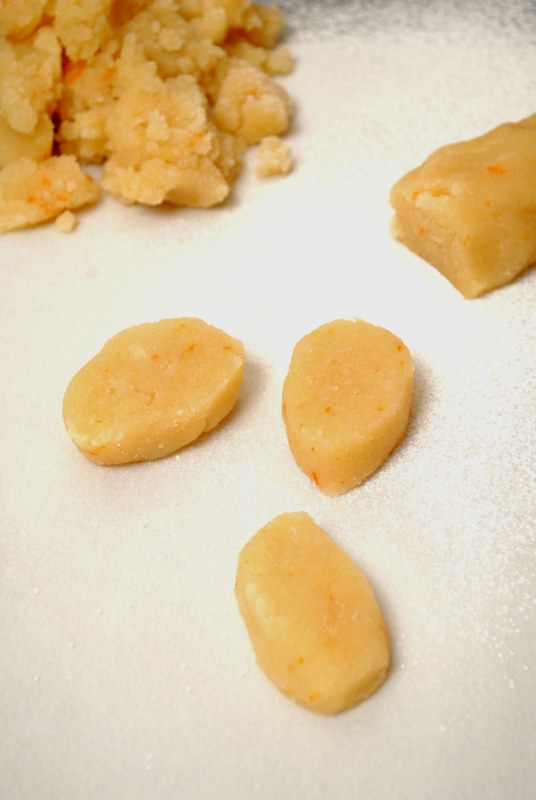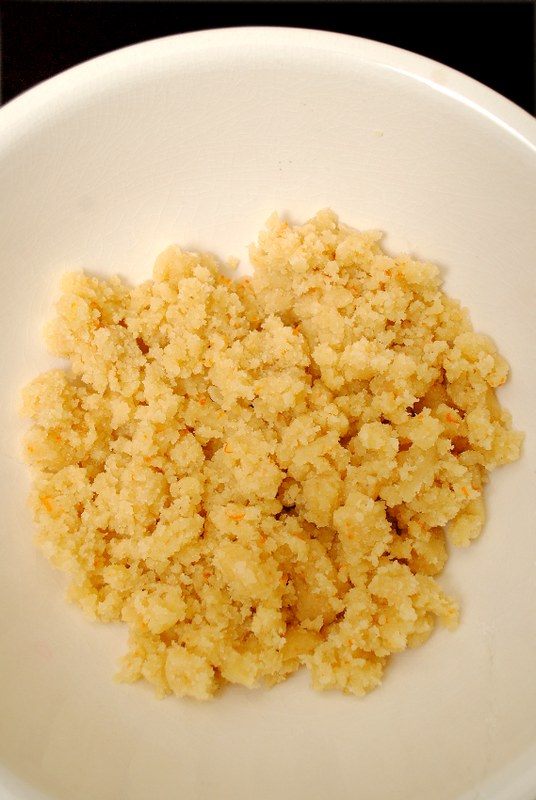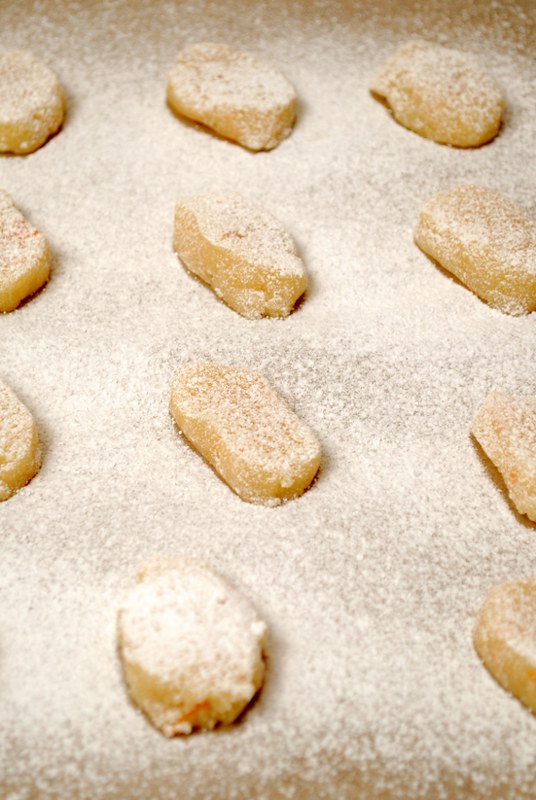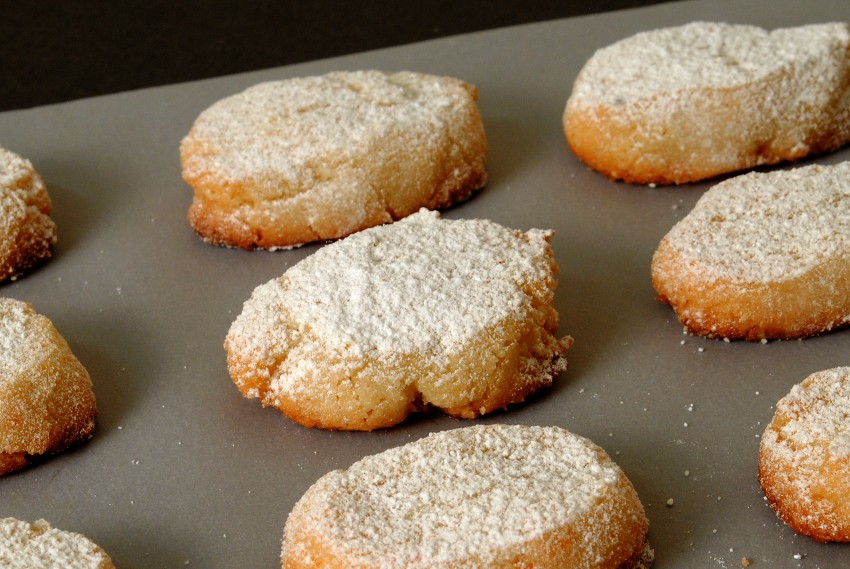Ricciarelli
Everyone recognises the French macaron, the almond-and-meringue based confection sandwiched together with buttercream that looks so chic in a rainbow of different colours on the counters of shops such as the famous Ladurée. Like so much associated with French cuisine, the macaron is delicate, refined – and very difficult to make properly.
Macarons have a distant Italian cousin in the shape of ricciarelli (pronounced ‘rich-ah-rellee’), almond cookies native to the city of Siena. Like macarons, ricciarelli are made with ground almonds, whisked egg-whites and sugar, but they lack the airy delicacy of the macaron. Dredged with icing sugar, these craggy ovals have a dense, chewy interior and pack an almondy punch that any afficionado of the heart-shaped fruit will appreciate. They are also an awful lot easier to make than their French counterparts.
I’ve adapted a recipe from Antonio Carluccio with some minor borrowings from other sources. Here’s the beta:
300g ground almonds
350g caster sugar
Whites of two eggs, beaten to stiff peaks
Grated zest of 1 orange
1-2 tablespoons bitter almond extract
I’ve deviated from Carluccio’s formula by substituting orange zest for lemon, and by the addition of bitter almond extract. Carluccio includes vanilla essence, but it doesn’t seem right to me to cram almond, vanilla and citrus flavours into a single recipe. These are all distinctive flavours that should be given space to show themselves off. I chose to jettison the vanilla to avoid muddying things, although you may wish to do things the other way round. As regards the choice of lemon or orange, either are authentic ingredients: I just prefer the latter. I’ve also left out the tablespoon of honey from the original recipe. There’s no harm in including it, but I can’t say it makes any noticeable difference.
First mix the ground almonds and caster sugar together in a bowl. Use your fingers to break up any lumps in the sugar and thoroughly incorporate the ingredients. Add the zest and the almond extract.
Next, whisk the egg whites until they hold a peak. Now fold the egg whites into the almond-sugar mixture. It may take a while, but the ingredients will come together to form a stiff dough.
Roll the dough into a sausage shape 3-4cm in diameter. This recipe makes quite a lot of dough, so you can do this in batches. With a sharp knife, slice off discs about 1cm thick. At this point I squidge the discs into a rough oval with my fingertips. They may seem rather small, but ricciarelli are very sweet: although they are usually described as biscuits, I think they are more akin to confectionery.

Traditionally, each piece of dough is placed on a disc of rice paper to be baked. In my opinion this doesn’t lend anything much to the end result and is fussy and time-consuming. I line a baking sheet with a piece of baking parchment or greaseproof paper and place the dough on that. Then use a sieve to dredge a layer of icing sugar over the dough. After this, leave them for 15-20 minutes. This allows the outer layer of the dough to dry out slightly. When they are baked, this crust will split and give the biscuits their characteristic crackled appearance.
Place the ricciarelli in an oven pre-heated to 160 °c and bake for about 15 minutes. Keep an eye on them: if they look like they are beginning to brown, take them out even if their time isn’t up. Once they are baked, slide the baking parchment onto a cooling rack. The biscuits will have stuck to the paper, but they will peel off once they have cooled.
The dough hardly spreads at all, so you can place the biscuits quite close together. Even so, you will probably need to bake them in several batches. Ricciarelli can be eaten as soon as they have cooled, but they’re best left for a day in a biscuit tin or similar container. Embrace your inner-Marcello Mastroianni and consume with espresso, a dark suit and a pair of dark glasses. Cool.



